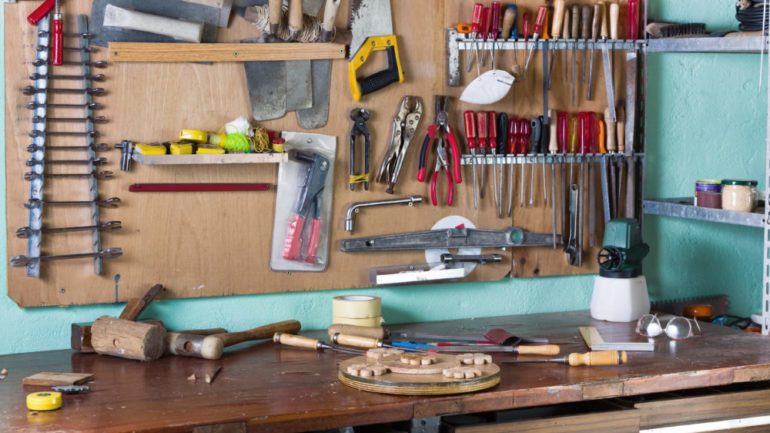Even the simplest household fix-it job goes more smoothly with the right tool in hand. Here’s a quick guide to what the well-stocked home toolbox should contain.
Cutting Tools
Handsaws include wood saws that do cross-cuts (cutting across the grain of the wood), rip cuts (cutting along the grain), and hacksaws for cutting metal. Wire snips and metal snips are used for metallic materials. Also helpful: a utility knife and heavy-duty pair of scissors.
What type of power saw do you need? It depends on the type of job you’re doing. Circular saws help with straightforward cutting. Jigsaws turn along curving lines to cut patterns in wood. Use a router to put various-shaped beveled edges on wood. Reciprocating saws are good for demolition work such as cutting through sheetrock, small to medium tree limbs or framing lumber.
If you want to get deeper into woodworking, there’s no shortage of specialty saws and other cutting devices. One of the most versatile is a compound miter saw, which can cut lumber at multiple angles at once. This is vital for doing things such as molding for cabinets and walls. A table saw is good for cutting long pieces of wood. Jointers and planers are needed to finish carpentry. Finally, power sanders relieve a lot of hand and arm fatigue.
Fastening Tools
Screwdrivers come in two basic types: flathead and Phillips. A well-stocked tool chest will contain several of each in multiple sizes. Less frequently needed, but still useful, are hex head, socket head, and Torx head, a star-shaped tip. A very versatile tool is a screwdriver handle with interchangeable heads.
A cordless drill and cordless screwdriver are major conveniences. Cordless drills offer unlimited movement around the house, but less power than a corded drill. A set of wrenches is essential. Invest in a set with standard and metric measurements. Pliers and vise grips are basic types of adjustable gripping devices. Hammers come in different weights. Rubber mallets are useful for rapping wood pieces together without marring the wood.
Measuring Tools
A 25-foot, retractable, locking measuring tape is a good starter tool. Make sure it is heavy-duty. A square is a measuring device turned at a ninety-degree angle, with measurements along both sides and a lipped edge. It is fundamental to measuring and making angles for cutting. Levels are essential, too, and it’s a good idea to have a variety of sizes on hand.
Your Workspace and Bench
A good place to work is as important as having the right tools. Two factors come into play. The quality of your workspace depends on the room you have. You’ll need space for a workbench and for the storage of tools and supplies.
Check online for workbench plans, if you prefer building your own. Retailers also have kits or portable, folding benches. The main ingredient: sturdiness. A good-sized bench should measure at least forty-eight inches long, twenty-six inches wide and thirty-three inches tall.
Storage is crucial. You’ll need a pegboard to hang hand tools, shelves underneath to store power tools, and pull-out bins for screws, nails and other small pieces. Finally, a good light source, mounted overhead and easily accessible, is important. A power strip mounted on the side of the bench will eliminate cord clutter.
Related – Hiring the Pros to Organize Your Garage


